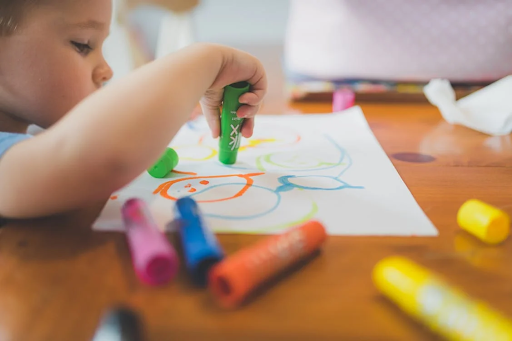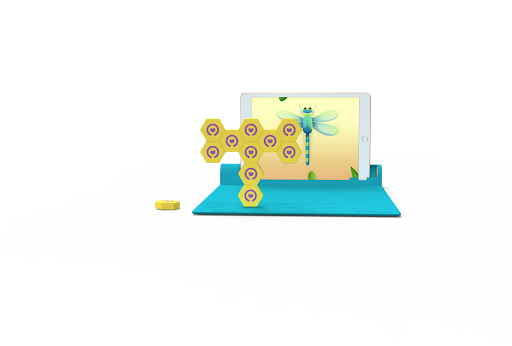
Learning shapes forms the basic thing a toddler learns within the first years of his education. It is more than just mere recognition of a square or circle; it actually forms the very basis of their brain development. By recognizing shapes in this way, toddlers start noticing the patterns around them, which further helps them in problem-solving and critical thinking. Early recognition of shapes helps develop fine motor skills through drawing and sorting of shapes.
Shapes are everywhere, from the circular wheels on their toys to the triangular slice of pizza they enjoy. Recognizing these shapes enhances their observational skills and spatial awareness. Moreover, understanding shapes is a precursor to learning more complex concepts in math, such as geometry. By incorporating shapes into everyday learning, toddlers build a solid foundation for future academic success.
Activities that focus on shapes can be incredibly engaging, catering to various learning styles and turning playtime into a rich educational experience. Drawing, puzzles, and games involving shapes can be quite fun and very helpful ways to learn about shapes. An early introduction to learning the shapes may inspire a love of learning that will help children when they grow up.
Why is Shape Recognition Important for Kids?
Shape recognition is part of early childhood education and forms the very foundation for other cognitive skills. A toddler who learns about shapes, therefore, does not only learn to identify various forms but also develops very important brain functions. For instance, distinguishing between a square and a circle enhances their visual-spatial skills, which are important for tasks like reading and navigating their environment.
In addition, learning shapes boosts memory retention. As children repeatedly encounter and identify shapes, they strengthen their memory pathways, making it easier to recall information. This process also aids in categorization, helping kids to sort and classify objects based on their characteristics—a skill that is fundamental in both math and science.
Furthermore, shape recognition enhances problem-solving abilities. By recognizing patterns and understanding the properties of different shapes, toddlers learn to approach challenges methodically. This skill correlates with improved performance in more complex puzzle-solving and other critical-thinking activities. Engaging with shapes also enhances language development as children learn new words and concepts associated with each shape.
What are the different types of shapes for kids?
When teaching toddlers about shapes, they first need to be taught the basic ones. Some of those common shapes are the square, where all four sides are of equal length, and the circle, recognized by its round, continuous curve. The triangle, with its three sides, introduces them to a different kind of geometric figure. Rectangles are also important, similar to squares but with two longer sides.
Moving beyond these basic shapes, toddlers can also learn about stars, which often have five or more points, making them an exciting and visually engaging shape. Ovals, similar to circles but elongated, are another great shape to introduce. Hearts are a particularly fun shape to identify, especially around holidays, such as Valentine’s Day.
Introducing such diverse shapes to a toddler makes them appreciate that shapes can be many, and they can start noticing these forms in their daily environment. This diversity in shapes not only broadens their understanding but also keeps their learning experience lively and engaging.
How do you teach shapes to kids?
Teaching shapes to toddlers can be a delightful experience filled with creativity and fun. Incorporating various fun activities can help make this learning process engaging and memorable for the little ones.
Shape-Sorting Games
Shape-sorting games are very effective in introducing your toddler to various shapes. Take the help of shape sorters, which are basically toys designed with cut-out holes in various shapes along with blocks that fit into those holes. You can ask your child to match the blocks with the correct holes. Another idea is to make a homemade shape-sorting game using items in everyday life. For example, cut different shapes from colored paper and let your child sort those shapes into containers labeled with the shape names. Such an activity will not only enhance shape recognition but also increase their fine motor skill development.
Shape Drawing and Coloring

Some good modes of teaching shapes to preschoolers are drawing and coloring. Give your child crayons, markers, or colored pencils along with pieces of paper containing large outlines of shapes like a circle, square, and triangle. Let them color within the lines, as this not only introduces shapes but also develops fine motor skills. You may also draw shapes together and let them mimic your drawings. Develop a shape-based coloring book in which the different shapes are integrated into play scenes, such as at a park or in a cityscape. This way, children can connect shapes to real-world objects, making learning both fun and meaningful.
Shapes Hunt
Shape hunts are a fun way to introduce toddlers to identifying shapes within their environment. You can also make this a bit more exciting with a simple, identifiable checklist of shapes: circle, square, triangle, rectangle. Do a shape hunt with your child around the house or in the park. Ask them to identify and name specific shapes. For instance, a clock could be a circle and a window a rectangle. The activity will not only help them get a sharper acumen of shapes but also develop their power of observation. If you want to make it even more fun, you can incorporate a treasure map or a magnifying glass.
Shape-Based Crafts
Shape-based crafts provide a creative way for toddlers to learn about different shapes. You will need to have the craft materials ready, which include colored paper, glue, scissors, and markers. Engage your child by using various shapes for various art projects. You might cut out shapes for your toddler and help them make pictures of animals, vehicles, or houses from those cutouts. These activities will help them identify the shape and, at the same time, encourage creativity and fine motor development. Another good activity is that of making shape collages – meaning, gluing different shapes onto a big sheet of paper to form a mosaic. Crafts like this not only make the learning process about shapes enjoyable but also give satisfaction to the little one.
Puzzle Games
Some of the best ways to teach shapes to toddlers include puzzle games. These are games where children should be able to fit various shapes into their respective slots. This will significantly develop their shape identification together with their fine motor skills. As they continue manipulating these pieces, it is through them that toddlers learn to recognize the distinct features for each shape, thereby advancing their cognitive development. Puzzles also encourage problem-solving, as children figure out which piece goes where. For an interactive experience, consider digital puzzle toys and games like Plugo Link, which combine physical play with digital learning, making the process even more engaging.
Playdough
Using playdough to teach shapes offers a hands-on, sensory experience that toddlers love. Rolling, squishing, and molding playdough into various shapes helps strengthen their fine motor skills while also reinforcing shape recognition. You can guide your child to create different shapes using cookie cutters or simply by shaping the dough with their hands. Additionally, this activity allows for creative expression, as toddlers can combine shapes to form fun objects like playdough animals or vehicles. The tactile nature of playdough makes learning about shapes an enjoyable and memorable experience for young children.
Conclusion
Learning shapes plays a vital role in a toddler’s early development. It equips them with the tools to observe, categorize, and understand the world around them. By incorporating shape-based activities, you can make this essential learning process enjoyable and effective. These activities not only promote cognitive skills but also enhance fine motor abilities, creativity, and problem-solving.
From engaging shape-sorting games to creative shape-based crafts, each activity offers a unique way to reinforce shape recognition and identification. Integrating these fun, interactive methods into daily routines ensures that toddlers remain enthusiastic about learning.
So, embrace the opportunity to turn everyday moments into educational experiences. Use these tips and activities to make learning shapes a delightful adventure for your little ones.
FAQs:
1. How can I incorporate shape learning into my toddler’s daily routine?
You can easily incorporate shape learning into your toddler’s daily routine by pointing out and naming shapes you encounter throughout the day. For example, mention the circular shape of a clock or the rectangular shape of a book.
2. How can I make shape learning fun and engaging for my toddler?
Making shape learning fun and engaging involves using hands-on activities like shape-sorting games, drawing, coloring, and crafts. Turn learning into a game or a creative project to keep your toddler interested.
3. How do shape recognition skills contribute to early math development?
Shape recognition skills lay the groundwork for early math development by helping children understand geometry, spatial relationships, and pattern recognition, which are essential for problem-solving and logical thinking.
4. How can I assess my toddler’s progress in learning shapes?
Assess your toddler’s progress in learning shapes by regularly observing their ability to identify and name shapes in various contexts. Engage in activities like shape hunts or quizzes to see how well they can recognize and differentiate between different shapes.

